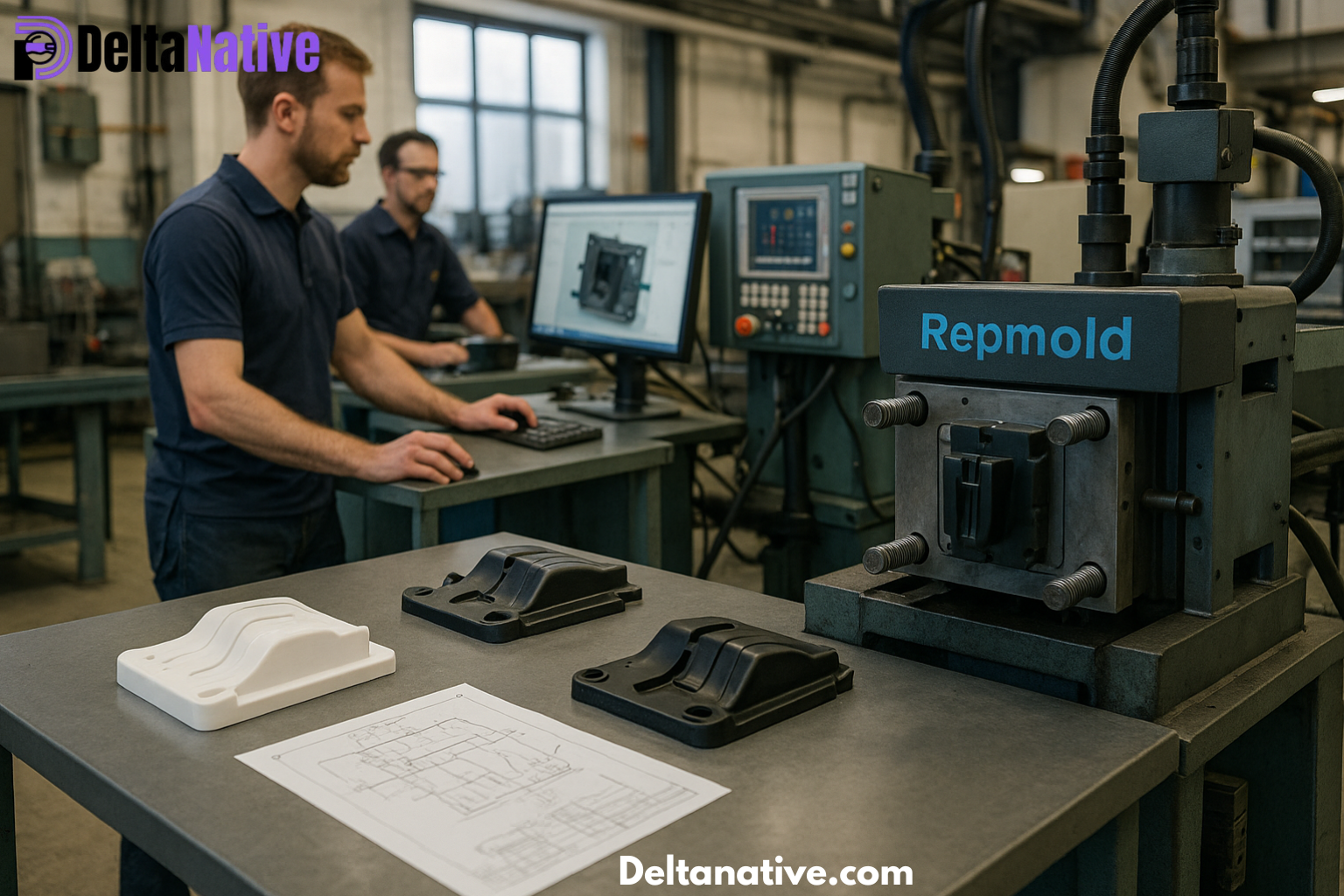Exploring innovation, advantages, and challenges in modern manufacturing
Introduction
Repmold has emerged as one of the most talked-about advancements in the manufacturing and industrial design space. It represents a new era of mold-making that promises efficiency, speed, and sustainability. Unlike traditional methods that can be slow, labor-intensive, and resource-heavy, Repmold offers a streamlined approach to creating molds and prototypes with precision.
The positive side of this technology lies in its ability to accelerate production and reduce material waste. On the other hand, the negative aspect comes from limitations in scalability and higher upfront investment costs. This duality makes Repmold both exciting and complex, requiring companies to carefully evaluate how it fits within their production needs.
What Is Repmold?
Definition and Concept
Repmold is an innovative mold-making process that leverages advanced materials and digital design workflows to replicate components quickly and accurately. It differs from conventional molding by cutting down on time, minimizing errors, and allowing for more complex designs.
At its core, Repmold is about precision and speed. It enables manufacturers to go from concept to reality in record time, making it a preferred solution for industries where rapid prototyping and customization are critical.
Also Read: TheJavaSea.me Leaks AIO-TLP142: Detailed Examination, Context, and Cybersecurity Lessons
Key Features of Repmold
Precision Engineering
One of the most powerful advantages of Repmold is its capacity for extreme accuracy. Each mold delivers a faithful reproduction of the original design, ensuring consistency across multiple units.
This makes Repmold particularly valuable for industries such as aerospace, healthcare, and electronics, where the smallest details can determine overall performance and safety.
Rapid Production
Traditional molds often require weeks of preparation, while Repmold can cut this timeline down to days. This ability to produce molds quickly allows companies to test designs faster and launch products more efficiently.
The speed of Repmold not only reduces time-to-market but also encourages innovation, as businesses can afford to experiment more frequently with new concepts.
Quick Bio: Repmold
| Attribute | Details |
|---|---|
| Technology Name | Repmold |
| Category | Advanced mold-making system |
| Core Strengths | Precision, speed, sustainability, flexibility |
| Best Applications | Prototyping, custom parts, small-batch production |
| Industries Using It | Automotive, aerospace, healthcare, consumer goods |
| Limitations | Initial investment, limited mold durability |
Applications of Repmold
Automotive Industry
In the automotive world, Repmold is used for creating prototypes of engine components, body parts, and custom tools. It provides manufacturers with the ability to test new models without committing to full-scale production.
This results in cost savings and faster development cycles, though the challenge remains in adapting Repmold for heavy-duty production where durability is a concern.
Aerospace and Medical Fields
Aerospace companies benefit from lightweight, high-precision molds that Repmold delivers. Similarly, in healthcare, Repmold is utilized for creating surgical tools, implants, and diagnostic equipment with exacting standards.
While these applications highlight the positive impact of Repmold, the negative factor is the strict regulation in these industries, meaning Repmold molds must meet demanding certification requirements.
Advantages and Limitations
The Positive Side
Repmold provides manufacturers with speed, flexibility, and cost-effectiveness. It reduces waste, supports sustainable practices, and creates opportunities for innovation. These benefits make it highly attractive for companies looking to remain competitive.
It also enhances quality control, as defects and inconsistencies are minimized. Businesses using Repmold report greater confidence in their prototypes and short-run productions.
The Negative Side
Despite its strengths, Repmold is not without drawbacks. The molds may wear out faster compared to traditional steel molds, limiting their use in long-term, high-volume production.
Additionally, the initial investment required for setting up Repmold systems and training staff can be a barrier for smaller companies. This creates a challenge in balancing short-term costs with long-term savings.
Future of Repmold in Manufacturing
A Growing Trend
Repmold is expected to continue expanding as industries seek faster and more sustainable production methods. Its role in prototyping, customization, and small-batch production is likely to increase significantly.
Manufacturers who adopt Repmold now position themselves at the forefront of innovation, gaining a competitive edge in industries where adaptability is key.
Integration with Digital Workflows
The future also lies in integration. As digital design tools, 3D printing, and automation advance, Repmold will work alongside these systems to create smarter, more efficient manufacturing ecosystems.
This combination will further reduce costs and open doors for designs that were previously impossible to achieve with traditional molds.
Also Read: 158.63.258.200: Understanding Invalid IP Addresses and the Fundamentals of IPv4 Networking
Conclusion
Repmold stands as a powerful symbol of how far manufacturing has come. Its ability to combine speed, accuracy, and sustainability makes it an essential tool for modern industries. The positive aspects are undeniable—faster production, greener practices, and flexibility for customization.
However, the negatives, such as high costs and shorter mold lifespans, remind us that no technology is flawless. The key for businesses is to balance these factors and deploy Repmold where it adds the most value. With thoughtful integration, Repmold has the potential to transform industries and redefine how we think about mold-making in the years ahead.
FAQs About Repmold
1. What is Repmold mainly used for?
Repmold is primarily used for rapid prototyping, custom designs, and small production runs across various industries.
2. How does Repmold save time compared to traditional methods?
It reduces mold creation time from weeks to days, allowing for quicker testing, iteration, and product launches.
3. Is Repmold suitable for mass production?
Not entirely. While excellent for short runs, Repmold molds may wear out faster, making them less ideal for high-volume, long-term production.
4. Which industries benefit most from Repmold?
Automotive, aerospace, healthcare, and consumer goods industries benefit due to their need for precision and rapid development.
5. What are the main challenges of adopting Repmold?
The biggest challenges include high initial setup costs, the need for skilled training, and ensuring mold durability for demanding applications.

